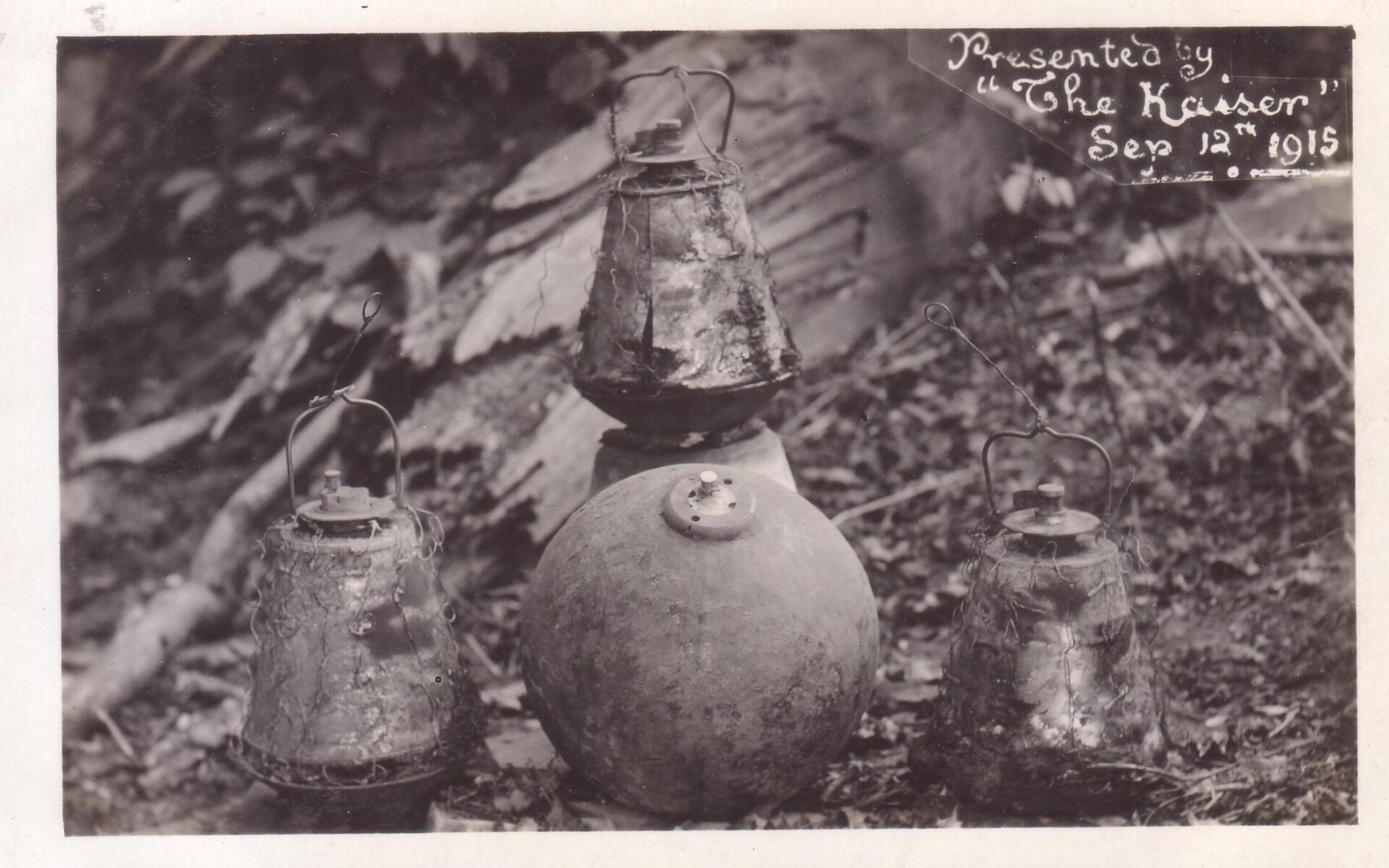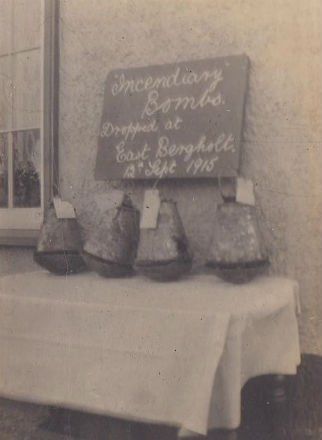ZEPPELINS, GOTHAS & 'GIANTS'
THE STORY OF BRITAIN'S FORGOTTEN BLITZ 1914-1918
11/12 Sept. 1915
Bombed: Essex
On the night of 11th September, a single Army Zeppelin -
LZ 77 commanded by Hauptmann Alfred Horn - approached the Essex coast at about 11.10pm just north of the mouth of the River Crouch. Horn had attempted to raid London four nights previously but ended up bombing rural areas in Suffolk. This time he fared no better.
As she crossed the coast, LZ.77 attracted rifle fire from coastguard lookout posts at Tillingham and Holliwell Point. At 11.15pm, she passed south of Southminster from where the 1-pdr pom-pom fired eight rounds at her without effect.
Horn then steered a course westward as though striking at London. He passed south of Maldon at 11.20pm, Ingatestone at 11.35pm and a couple of miles south of Chipping Ongar at 11.40pm. From there LZ.77 passed south of North Weald Bassett and, as he approached Epping, it appears something attracted Horn’s attention, because he turned north towards Thornwood, then back towards North Weald Bassett, from where he returned to Thornwood, less than a mile from Epping.
Over Wintry Park, LZ.77 stopped her engines and dropped four flares to illuminate the foggy fields below. Bathed in the light, Horn saw the tents of 2/3rd (South Midland) Field Artillery Brigade laid out below him. The brigade had its entire ammunition supply in the camp. Having identified a target, Horn took LZ.77 around again and at 11.50pm dropped eight high explosive bombs and 52 incendiaries. Four of the HE bombs landed within the camp but fortunately all eight failed to explode. An official report concludes that this was, ‘no doubt due to their safety appliances not having been withdrawn.’ There were no casualties in the camp. LZ.77 then departed, passing over Suffolk and Norfolk before reaching the North Sea coast around 2.00am.
Although the raid caused no damage, the confusing reports that reached London of first two, then four and finally six Zeppelins approaching the coast, put the capital’s defences on the alert at 11.37pm. Troops stood to and the Special Constables mustered, while extinguishing the lights at Woolwich Arsenal stopped important work for over two hours. In addition, an order prevented the movement of trains in or out of London to prevent their lights guiding any raiders in. Only at 2.50am did the order come through for the troops and Specials to stand down.
The foggy conditions restricted an aerial response. Only two aircraft were up, one from RNAS Chelmsford only took off at 1.25am long after LZ.77 had departed. The other, a RFC aircraft from Writtle, near Chelmsford, saw nothing.
Some of the bombs dropped on the artillery camp. The spherical bomb is an HE bomb of the APK type favoured by the military airships.The others are incendiary bombs.
(David Marks Collection)
Casualties: 0 killed, 0 injured
Damage: £0
12/13 Sept. 1915
Bombed: Essex & Suffolk
On the night following the solo raid carried out of Army Zeppelin LZ 77, another single Army Zeppelin appeared over England. But, like the previous raid, it achieved nothing of significance.
Commanded by Hauptmann Friedrich George, LZ 74, making her second raid on England in five days, crossed the coast at Walton-on-the-Naze at about 10.45pm and followed a westerly course. There was much ground fog in places, which may be why George passed over Colchester at 11.05pm without attacking the town. Following a north-west course from there, LZ 74 dropped two high explosive (HE) bombs on the village of Wormingford in Essex, which fell harmlessly in a field. Moments later another HE bomb fell at the village of Mount Bures, again without causing injury or damage. From there she turned south but, when over Wakes Colne at about 11.15pm, she circled around to the north east. As LZ 74 approached Dedham at about 11.35pm, a mobile RNAS maxim gun opened fire from a hill near the church at Stratford St. Mary. The gun fired two belts of ammunition and about 30 rounds of incendiary bullets. Attracted by the firing, LZ 74 turned back and dropped 11 HE and five incendiary bombs, which fell on Hills Farm in Stratford St. Mary. A police report stated that bombs fell within 15, 25 and 75 yards of various houses but damage was limited to six panes of glass smashed and some fences broken. Some telegraph wires were also damaged.
Flying eastwards now, at about 11.45pm George took LZ 74 over East Bergholt, where he dropped another four HE bombs and four incendiaries; they caused no damage. Returning to a north east course, LZ 74 then passed over Ipswich without dropping bombs - the fog obscuring much - but at Rushmere Heath another RNAS mobile maxim detachment opened fire. In response, George released four HE bombs over Rushmere - one of which failed to explode - and began to take an evasive zig-zag course. Neither the maxim nor the bombs caused any damage.
Continuing on the same course, at Woodbridge at about 11.50pm, a third mobile RNAS maxim detachment engaged, but poor visibility restricted their efforts. At 12.05am, a fourth mobile maxim gun made a final ineffective attack on LZ 74 as it passed Aldeburgh, before she headed up the coast and headed out to sea near Southwold at 12.18am.
One defence aircraft was airborne from Eastchurch in Kent, forty miles to the south, too far away to have much chance in locating the raider.
The four incendiary bombs dropped at East Bergholt
(David Marks Collection)
Casualties: 0 killed, 0 injured
Damage: £8
Follow Us
© Ian Castle 2021

